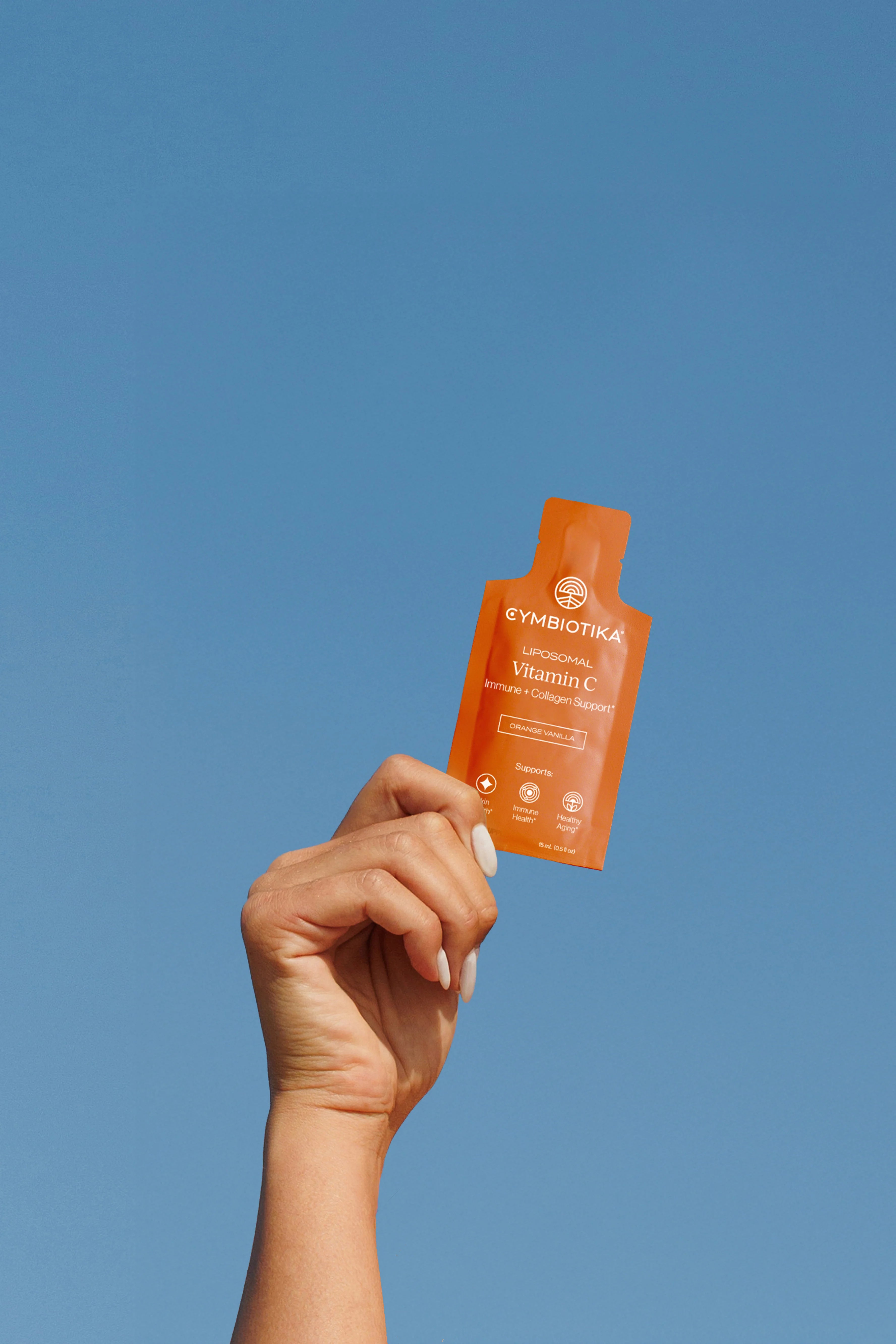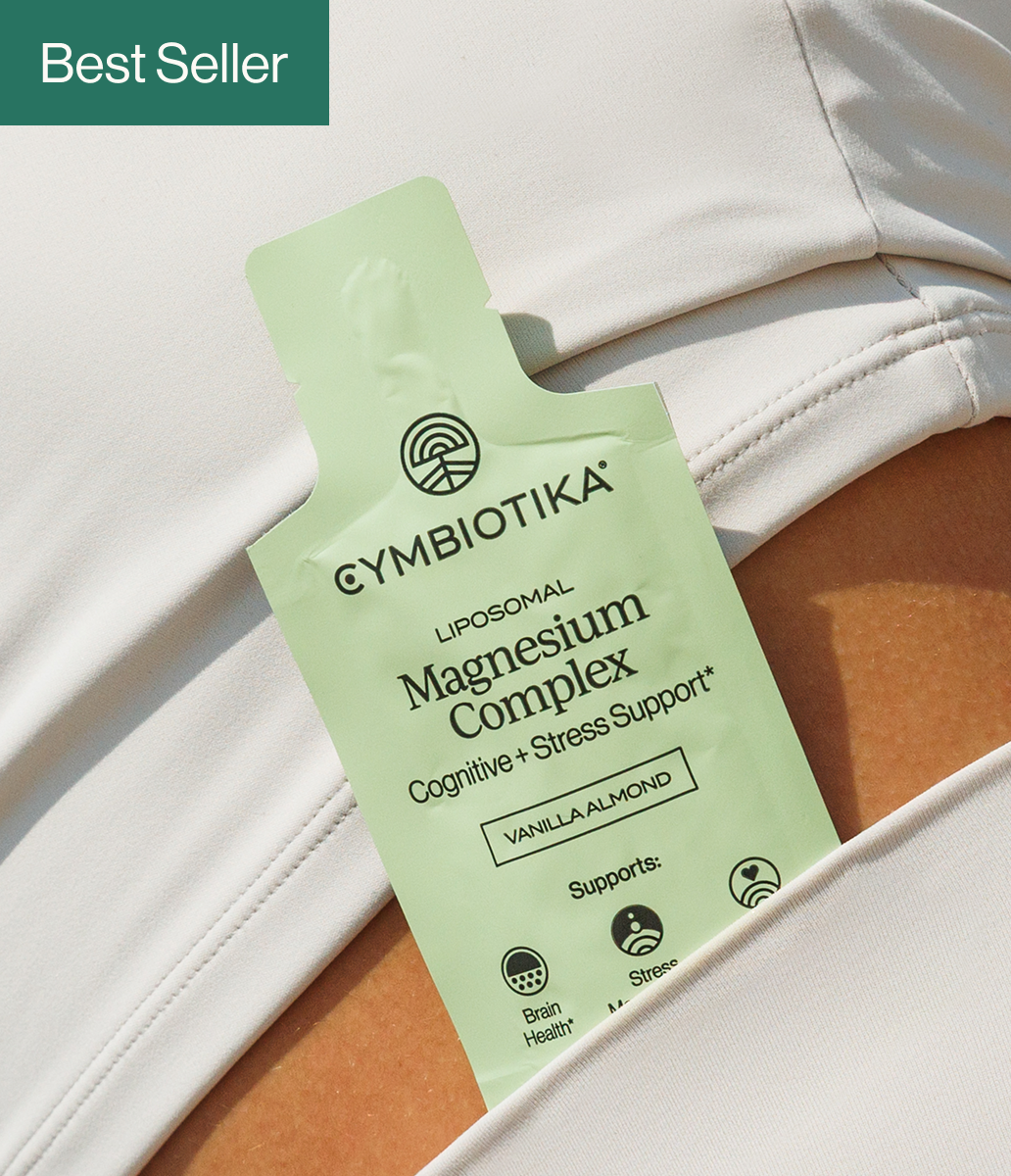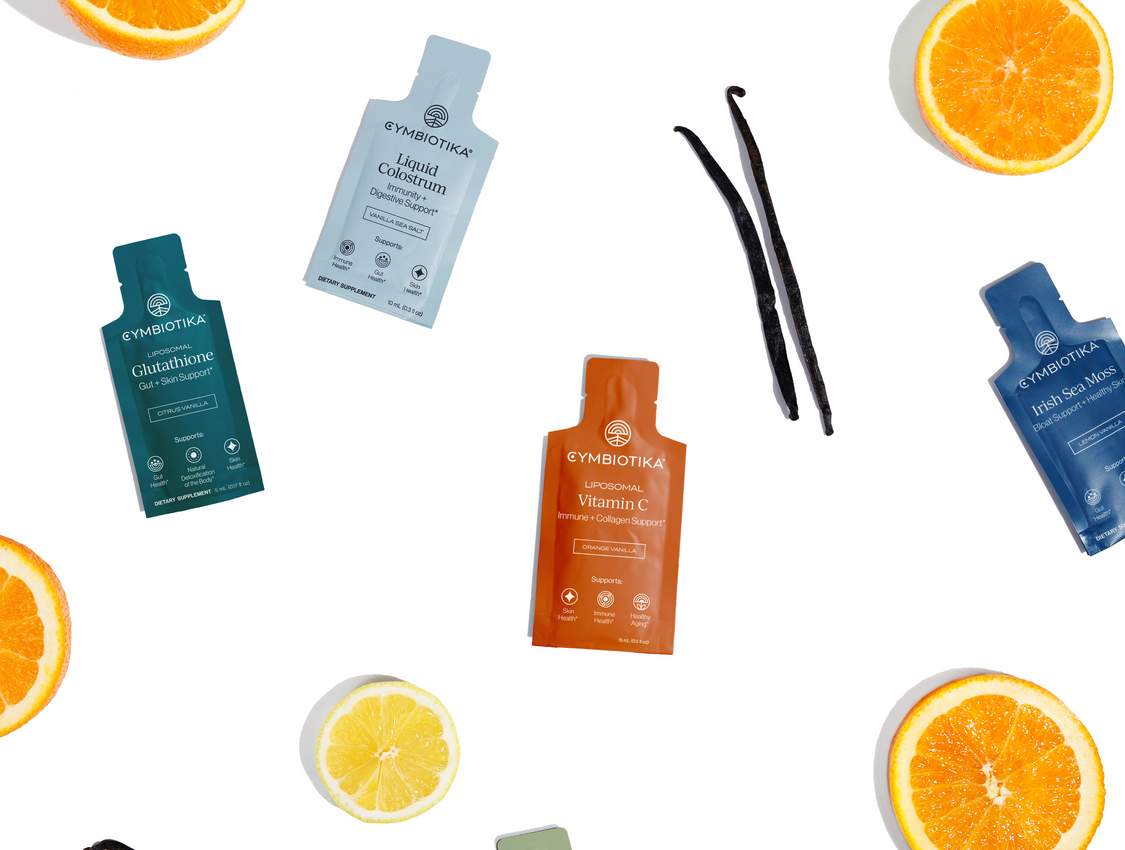
If you can think back to your childhood and easily conjure up an image of a concerned parent asking, “Sweetheart, did you take your vitamins?” then you’re not alone. And if you didn’t take their advice to heart back then, at the very least, you’ve probably recognized just how right they were to worry—vitamins are one of the most important aspects of our daily nutrition.
For all the value they add to our lives, how do we ensure our bodies actually absorb them?
This may surprise even your mother, but it’s not always a given. However, there are simple ways to adjust our diets, supplement intake, and meal schedule to maximize vitamin absorption and nutritional benefit—from A all the way to Z.
#1 Take Your Vitamins at Mealtimes
With few exceptions, you should take most vitamins, minerals, and supplements with food to help with the body’s absorption. Not only can vitamins cause nausea and vomiting on an empty stomach, but this can also lessen their absorption levels and overall impact.
How so? Well, when you eat a meal, or even when you know you’re about to, your brain sends signals to your stomach that essentially prepare your digestive system to do its job—like a pilot signaling to air traffic control, I’m coming in for a landing. This includes releasing digestive enzymes, which are the key facilitators of healthy digestion.
Rather than wait until the food is sitting like a lump in your stomach, the gastrointestinal system kickstarts the digestive process that allows it to first digest then absorb the meal you’re eating and all of its wonderful nutrients.
And what happens when you consume your vitamins then, too? They get included in the absorption process, like a stowaway in the airplane cargo.
And while “food + vitamins” is a simple rule to live by, there are specific combinations that even further enhance the body’s absorption ability.
#2 Pair the Right Micro & Macronutrients
There are plenty of specific food and vitamin (or vitamin and vitamin) pairings that enhance the absorption of one or the other—or both.
Take Fat-Soluble Vitamins With High-Fat Meals
Pairing fat-soluble vitamins—A, D, E, and K—with high-fat meals (including avocado, cheese, nuts, fish, and eggs) can increase our body’s ability to absorb these specific nutrients. Cymbiotika pairs Vitamin D3 and K2 together as part of our heart support supplements, as it can help with vitamin absorption while supporting cardiovascular health by reducing arterial plaque. See our blogs on how to increase nutrient absorption and how to boost nutrient absorption for more information on this topic.
One study proved this to be true of vitamin D-3. Those who had taken their supplement with fat-containing meals showed a 32% increase in vitamin levels over those who had consumed fat-free foods. But all fat-soluble vitamins are absorbed best alongside high-fat foods since our body processes them in the same way.
Many of these healthy choices are great breakfast foods, which makes it even easier to maximize your vitamin absorption when you take them in the mornings.
But we can take it even another step further.
Take These Specific Vitamins & Minerals Together
The synergy of certain vitamins and minerals is highly powerful—vitamin absorption both affects and is affected by the nutrients in other healthy supplements. Where you can, try to include these combinations in your daily intake:
-
Vitamin C + vitamin E – This pairing is an example of a purely symbiotic relationship, in that the nutrients from both vitamins become more effective than either on its own.
-
Vitamin E + vitamin A – Again, these two nutrients are believed to become even more powerful when taken in conjunction, and may improve the absorption rate of vitamin E through the small intestine.
-
Vitamin B12 + folate – Vitamin B12 is thought to be a prerequisite for our body’s absorption of folate, also known as folic acid or vitamin B9.
- Vitamin D + omega-3 supplements – We’ve already covered how important it is to take fat-soluble vitamins, like vitamin D, with dietary fats. However, as a healthy, convenient alternative, you can always take this with omega-3 supplements instead (which are rich in fatty acids).
#3 Add Probiotics to Your Dietary Routine
Probiotics are becoming quite the force to be reckoned with on the health and wellness scene—and that’s no accident. These health-promoting organisms are most often used to improve overall gut health, with digestive functioning and nutrient absorption at the forefront of this push.
The most effective probiotics are able to withstand the highly acidic environment of your stomach. Once there, they’re able to positively impact nutrient breakdown and absorption by outnumbering the harmful toxin-producing pathogens that negatively affect our digestive health.
It’s easy to recognize the value of probiotics, but how do you actively include them in your wellness routine?
First, they’re present naturally in plenty of healthy foods:
-
Dairy products, including yogurt, aged cheeses, and uncultured buttermilk
-
Fermented foods like sauerkraut, dill pickles, kimchi, tempeh, and miso
- Probiotic-rich beverages, such as kefir, a fermented milk drink, and kombucha, a sweetened green or black tea
They’re also widely available as supplements, usually in pill, liquid, or powder form. If you are wondering, “Are liquid vitamins better than pills?”, check out our blog post for more information. It’s safe to say that fermented foods and drinks can take some getting used to, so feel free to try easily digestible supplements in the meantime (or indefinitely, seeing as they’re a great source of probiotics in their own right).
#4 Incorporate Digestive Enzymes Into Your Day
Digestive enzymes are our body’s primary tool for breaking down foods in order to absorb their nutrients. Our bodies naturally produce enzymes, first in our saliva as we chew, then in our stomach, and finally in our pancreas as the food—or what was once food—passes into our small intestine to be absorbed.
But we can assist this biological process by ingesting enzyme-rich foods to support the existing enzymes we already have.
Here are some great natural enzyme sources:
- Tropical fruits, including pineapple, papaya, and mango
-
Other fruits and vegetables, such as avocado, kiwi, and banana
-
Probiotic-rich foods, namely sauerkraut, kefir, kimchi, and miso
- Raw honey and ginger
These foods naturally lend themselves to meals like avocado toast, a honey miso stir fry with a healthy dose of ginger, and smoothie bowls, with blended fruits and oats, nuts, and honey drizzled on top.
#5 Handle Your Vitamin-Rich Foods Carefully
Between the leafy greens, deep orange squash and gourds, and nutritious cruciferous vegetables, it probably doesn’t shock you that veggies are an especially good source of vitamins.
However, this only holds true if you don’t sauté away their nutritional value.
Eating raw fruits and vegetables is one way to ensure that you get every ounce of vitamin and mineral goodness these foods have to offer, but there are also effective ways to cook your favorite vegetable-rich meals without ruining their high vitamin content. And naturally, if your food has more vitamin content available when you eat it, there will be more nutrients for you to absorb.
Follow these tips the next time you’re purchasing, packing away, or preparing a nice home-cooked meal:
-
Eat fresh produce whenever possible. The longer you store food at home, the fewer nutrients it has by the time you cook and eat it. Naturally, this presents a logistical challenge to many families but is something to strive for when you can.
-
Store whole veggies in cold, sealed containers. When you return home with groceries, unpack them quickly into the vegetable (crisper) drawer in your fridge or directly into the freezer, depending on your meal plans. Use air-tight bags and keep your produce intact until you’re about ready to eat it—unfortunately, this means no slicing, dicing, and chopping on Sunday to meal prep for the week ahead, as the increased surface area speeds up the rate of nutrient loss.
- Cook quickly when using heat. This is especially true of foods high in water-soluble vitamins, as they easily lose much of those vitamin-derived nutrients when boiled, baked, or otherwise overcooked. Recommended preparation techniques include steaming rather than boiling, using a pressure cooker or the microwave, keeping the temperature low, and cooking lightly.
Now and then, add a plate of raw veggies to a meal instead of a side of baked potatoes or steamed broccoli. In this case, you’ll know your body will be absorbing the maximum amount of vitamins and other nutrients.
#6 Spice Your Foods With Black Pepper
This household staple couldn’t be easier to incorporate into your everyday meals. Not only does it add a little extra kick of flavor, but it also improves your ability to absorb nutrients, including those derived from vitamins.
Piperine, an alkaloid found in black pepper, is said to be responsible for this improvement, increasing the absorption of vitamins and minerals taken alongside it. This is because piperine increases the bioavailability of these nutritious compounds, essentially upping the amount that is ready and accessible to be absorbed into your bloodstream.
So, what happens otherwise?
Imagine this: you vacuum your hardwood floors without moving any of your furniture out of the way. There’s only so much dirt and dust that you can possibly suck up with the vacuum hose. But if you clear the space to guarantee you have easy access to the dust bunnies, stray hairs, and food scraps littering your living room floor, you’ll have no problem vacuuming it all up.
That’s more or less what happens when you increase the bioavailability of your vitamins.
So the next time you’re cooking a delicious vegetable dish chock full of nutrients, don’t forget to add in a few extra dashes of black pepper—your taste buds and your digestive system will thank you.
Improve Absorption With Cymbiotika
There you have it: six useful tips on how to increase vitamin absorption! However, these techniques might not always factor into your daily life so easily. Buying only fresh produce and perfectly scheduling your supplements is a great idea, but let’s face it—we just can’t do it all.
To keep you on track, regardless of your grocery shopping schedule, cooking methods, and daily nutritional intake, there’s Cymbiotika.
For a healthy dose of probiotics, try a spoonful of our specially formulated ReGenesis supplement. For increased bioavailability and superior absorption, try our Synergy Liposomal Vitamin C with your breakfast, lunch, or dinner.
For improved vitamin absorption that lasts, there’s Cymbiotika.
Sources:
Verywell Health. Types and Functions of Digestive Enzymes. https://www.verywellhealth.com/what-are-digestive-enzymes-1945036
Journal of the Academy of Nutrition and Dietetics. Dietary Fat Increases Vitamin D-3 Absorption. https://jandonline.org/article/S2212-2672%2814%2901468-3/abstract
Medical News Today. What are fat-soluble vitamins? https://www.medicalnewstoday.com/articles/320310
The JAMA Network Journals. Using vitamin E and C supplements together may reduce risk of Alzheimer disease. https://www.eurekalert.org/pub_releases/2004-01/jaaj-uve011404.php
Journal of Food Science and Technology. Probiotics, prebiotics and synbiotics- a review. https://www.ncbi.nlm.nih.gov/pmc/articles/PMC4648921/
Medical News Today. Probiotics foods: What to know. https://www.medicalnewstoday.com/articles/323314
Healthline. 12 Foods That Contain Natural Digestive Enzymes. https://www.healthline.com/nutrition/natural-digestive-enzymes
Nutrients. Iron and Physical Activity: Bioavailability Enhancers, Properties of Black Pepper (Bioperine®) and Potential Applications. https://www.ncbi.nlm.nih.gov/pmc/articles/PMC7353321/

























